Flower Glossary is reader-supported. When you buy through links on our site, we may earn an affiliate commission.
We tend to imagine the desert a dry, barren landscape with little to no space for wildlife and plants to thrive. But the reality is that there are, in fact, many species that have adapted to such conditions, all of which tend to be characterized by a resolute survival strategy despite a lack of rain and extreme heat.
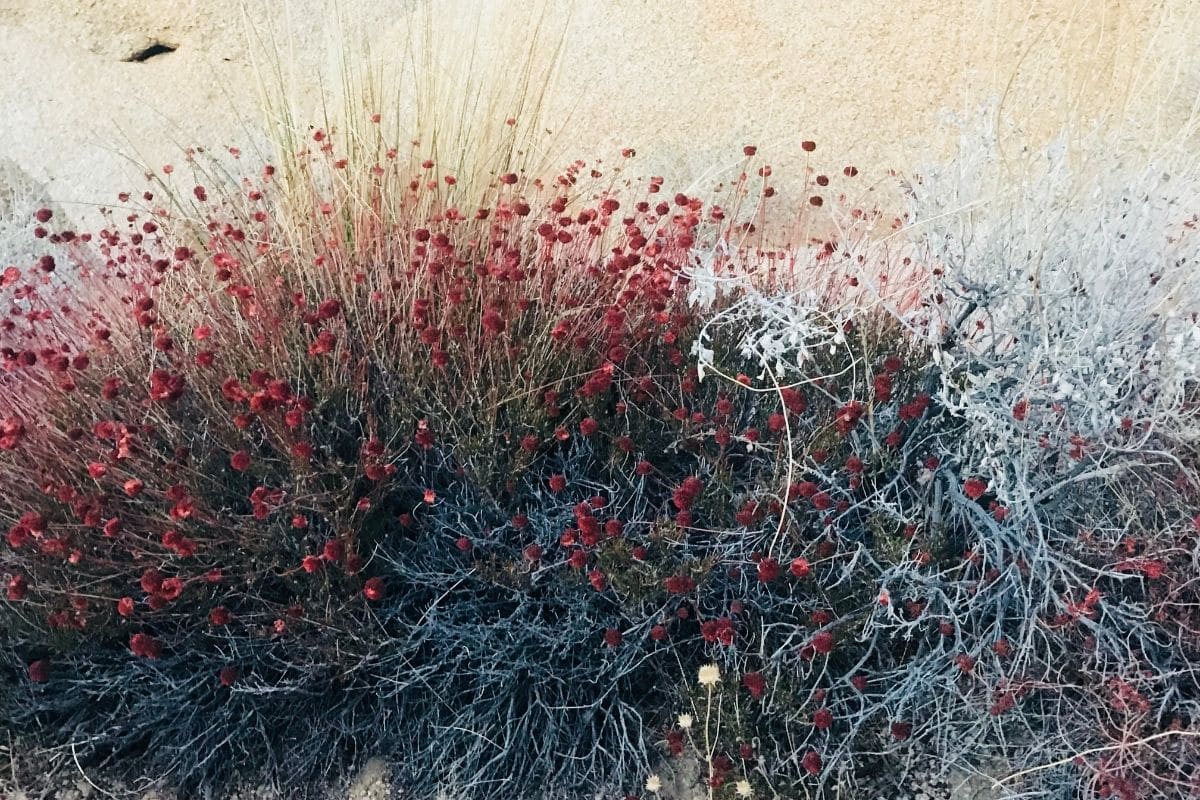
So it may come as no surprise to find out that there are thousands of plants out there that can thrive in desert-like conditions. This range includes cacti variations, large trees, and extremely vibrant flowering plants that immediately draw your eye, to name a few.
Over time, these desert plants have managed to wheedle their way into the hearts and homes of people around the globe, and are now an essential part of tending to a yard – especially in humid climates.
Two of the largest reasons as to why landscapers adore these plants is that they preserve water and are very easy to care for. They also look great!
If you want to know a bit more about desert plants, as well as some of their most important characteristics, then you’re in the right place. We’ve narrowed down 25 desert plants that deserve a little bit of your attention.
Along with descriptions of these popular plants, we have also included pictures and the plants’ official botanical name to help you to identify and distinguish them from one another.
Table of Contents
Desert Plant Characteristics
Desert plants come in all shapes and varieties, so it won’t be difficult finding your new favorite. Some of the most popular desert plants include the barrel cactus, the desert lily flower, and aloe vera flowers. Plants that are best suited to life in desert conditions should have the following qualities:
- Must be able to thrive under the full sun (they don’t require shade to survive).
- They must be drought tolerant.
- Must be low maintenance.
- Such plants must be able to achieve full growth in arid, sandy soil.
- Desert plants should be able to withstand hot and cold temperatures day and night.
How Desert Plants Adapt to Their Environment
The key to a successful landscape is to work with the surrounding environment. If you’re interested in adding a plant (or two) to your yard and you’re residing in an arid zone, you might want to consider selecting a desert plant that works with the temperature and soil in your area.
This will not only ensure that your landscape can be easily maintained, but that it is also healthy – even when it is exposed to scorching temperatures. But before you even begin to think about this, you must understand the basic survival strategy that plants must adhere to in order to survive:
- Desert plants must adapt to the environment around them by growing close to the earth. This allows them to seek shelter from extreme weather conditions, such as high winds, and is an essential part of plant growth.
- Durable desert plants must learn to survive by adapting their features to either grow extremely long roots or an intricate network of shallow roots. This will help to decrease water loss and keep the plant full of moisture in even the toughest of conditions.
- Many plants found in desert locations also have reduced leaf size so that the plant won’t lose as much water to transpiration, which is the process of water circulation throughout the plant that then evaporates into the air. Limiting this step in the survival process means less spent energy and water.
25 Desert Plants (With Pictures and Names)
Now let’s get onto the fun part; exploring desert plants that are commonly found in hotter climates. In this list you’ll discover shrubs, flowering plants, trees, and cacti that you may not have heard of before!
1. Aloe Vera (Aloe Barbadensis)
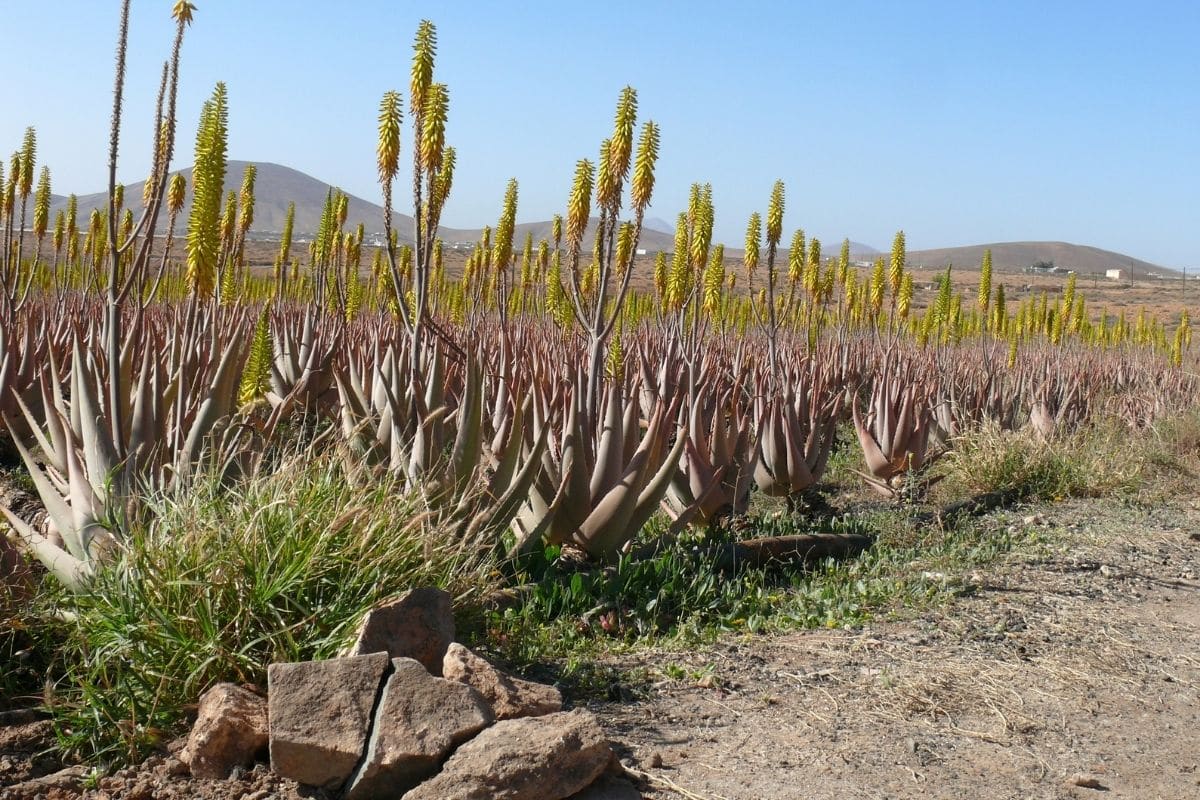
Source: Pinterest
Aloe vera, which grows in arid climates, is a rosette shaped succulent variation that can be commonly found across the vast desert landscape. Aloe vera also grows in desert sands, where it thrives in bone-dry, rocky soil.
It has over 500 different species, but aloe vera is one of the most commonly occurring. You can also grow aloe vera indoors in pots. The best part? It looks great and is completely low maintenance!
2. Bottlebrush (Callistemon)
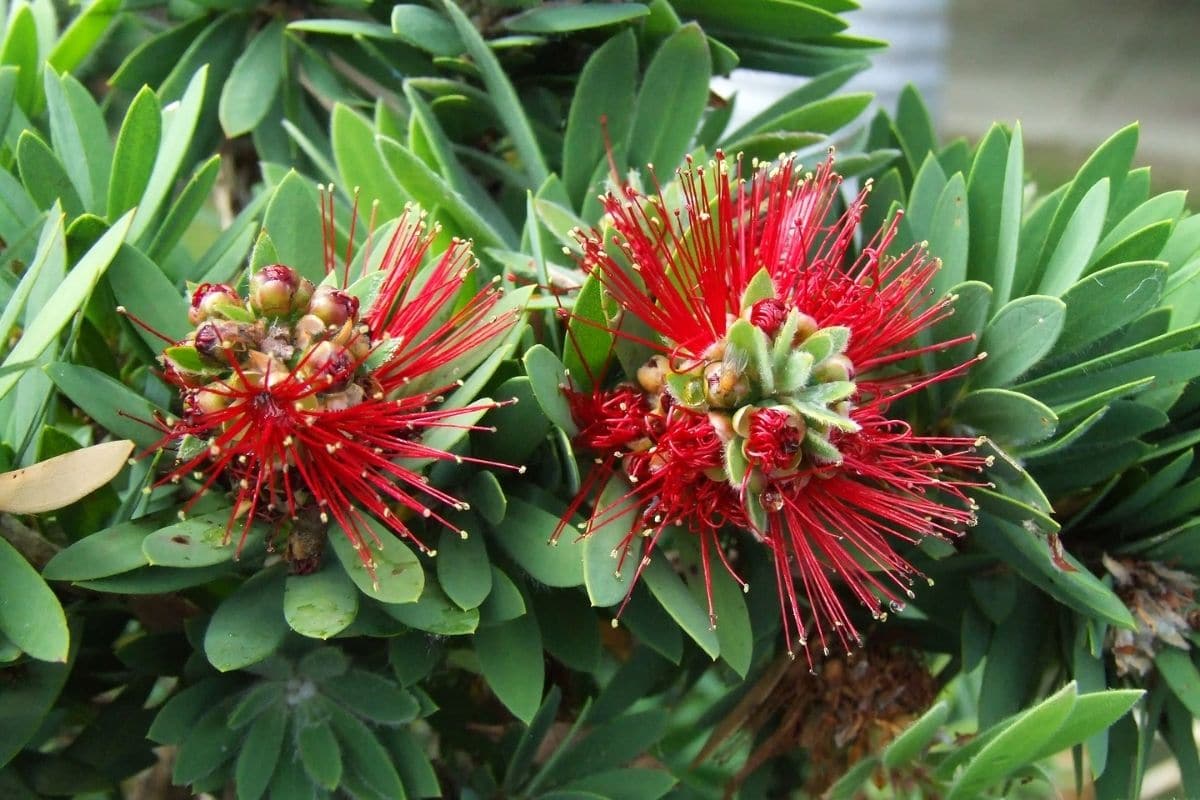
Source: Pinterest
Bottlebrush plants are small shrubs that require minimal watering in order to thrive in the heat of a full sun. They are native to Australia and can actually grow in various climates, notably including desert regions. Bottlebrush plants usually feature colorful bottle brush shaped red flowers that contrast with its light green needle-like foliage.
3. Brittlebush (Encelia Farinosa)
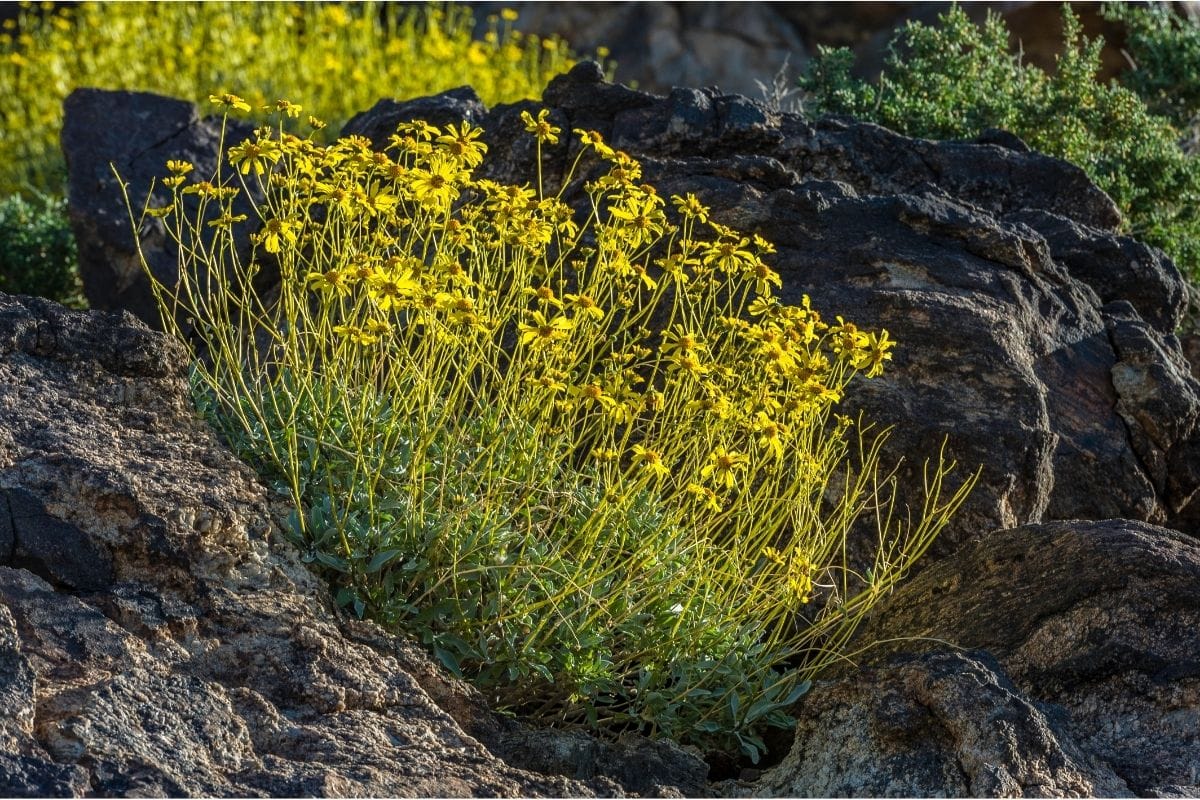
Source: Pinterest
Brittlebush is a frequently occurring low-growing rounded desert shrub, usually found in Mexico and southern states. As its name may imply, this shrub features stiff stems which are prone to easy breakage.
When its stunning yellow flowers are in bloom, Brittlebush can brighten up any desert landscape. In hotter climates, this plant will lose its leaves and will rely on stored moisture within its stems in order to survive.
4. Creosote Bush (Larrea tridentata)
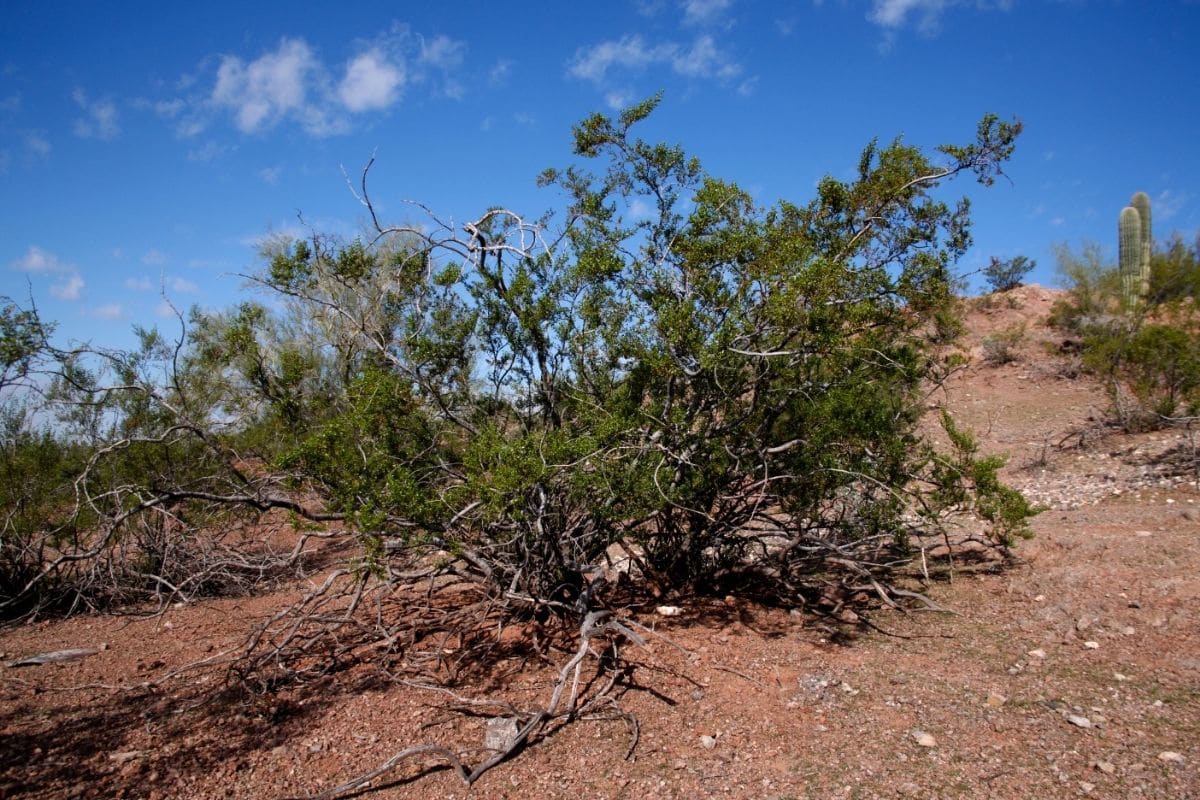
Source: Pinterest
Also known as greasewood, this hardy plant is native to the desert. Its evergreen shrubs produce tiny flowers that are yellow, while their large roots absorb water from the desert soils.
It’s called a creosote bush for good reason – it smells like creosote, which comes from coal. Mature variants of this plant can survive in extreme draught and temperatures ranging up to approximately 160 °F.
5. Curve Leaf Yucca (Yucca Gloriosa var. Tristis)
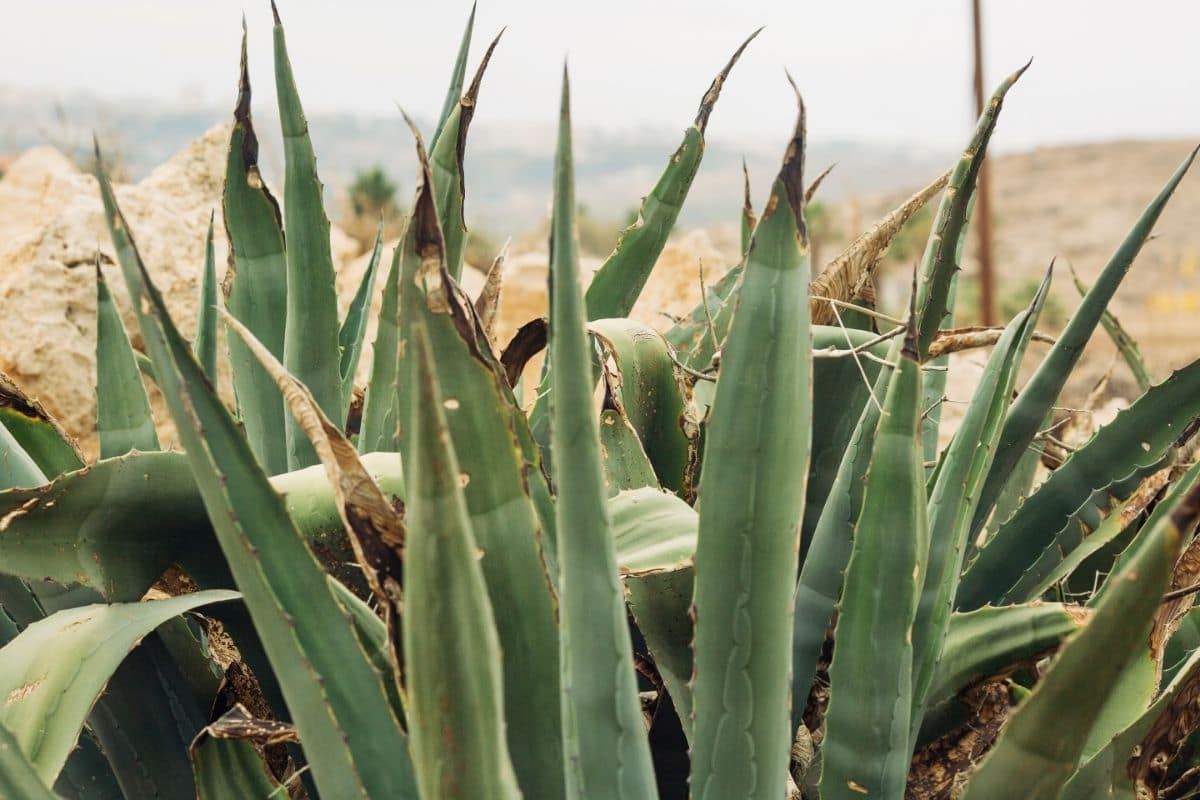
Source: Pinterest
The Curve Leaf Yucca features curved lower leaves and tapered, stiff upper leaves. Yucca plants can withstand intense heat from the sun and small amounts of water.
Much like other plants that grow well in hot desert climates, the Curve Leaf Yucca grows in coastal dunes and sandy soils and produces beautiful, large white flowers.
Overall, it’s a common desert plant and is also grown as a decorative plant in various southern states.
6. Desert Lily (Hesperocallis Undulata)
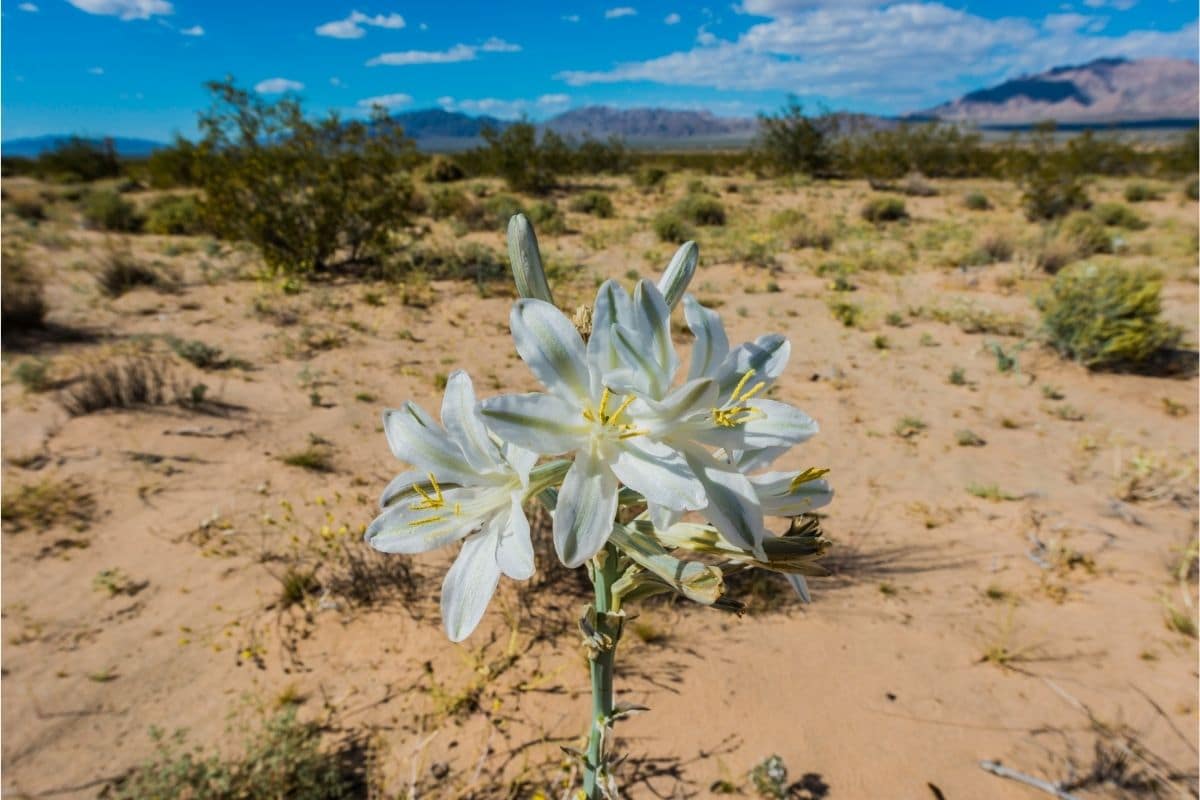
Source: Pinterest
Succulents and cacti can survive in the desert heat with ease, but so can the desert lily! Though it is more like an agave plant than it is a “true lily”, it remains very common and can usually be found in Mexico and the Southwest.
However, the bluish-gray plant produces large white lily-like flowers—hence the common name desert lily. These large plants that live only in the desert can grow up to 6 ft. (1.8 m) tall.
7. Desert Marigold (Baileya)
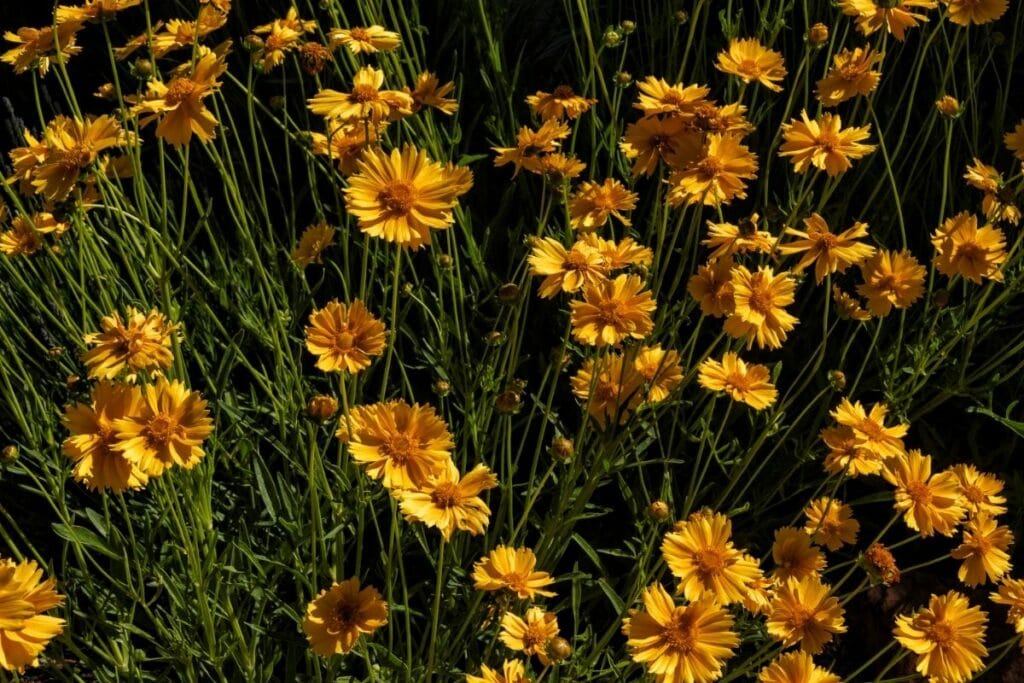
Source: Pinterest
You can find these sturdy flowering perennial plants in the deserts of Arizona, California, Mexico, and Utah. Like any type of Marigold plant, this variation adds a pop of vibrant yellow color to an otherwise bland landscape.
Its large disc flowers bloom from spring and right through the hottest months of the year. It is also heat resistant and requires little to no water to thrive under the full sun.
8. Desert Palm Trees
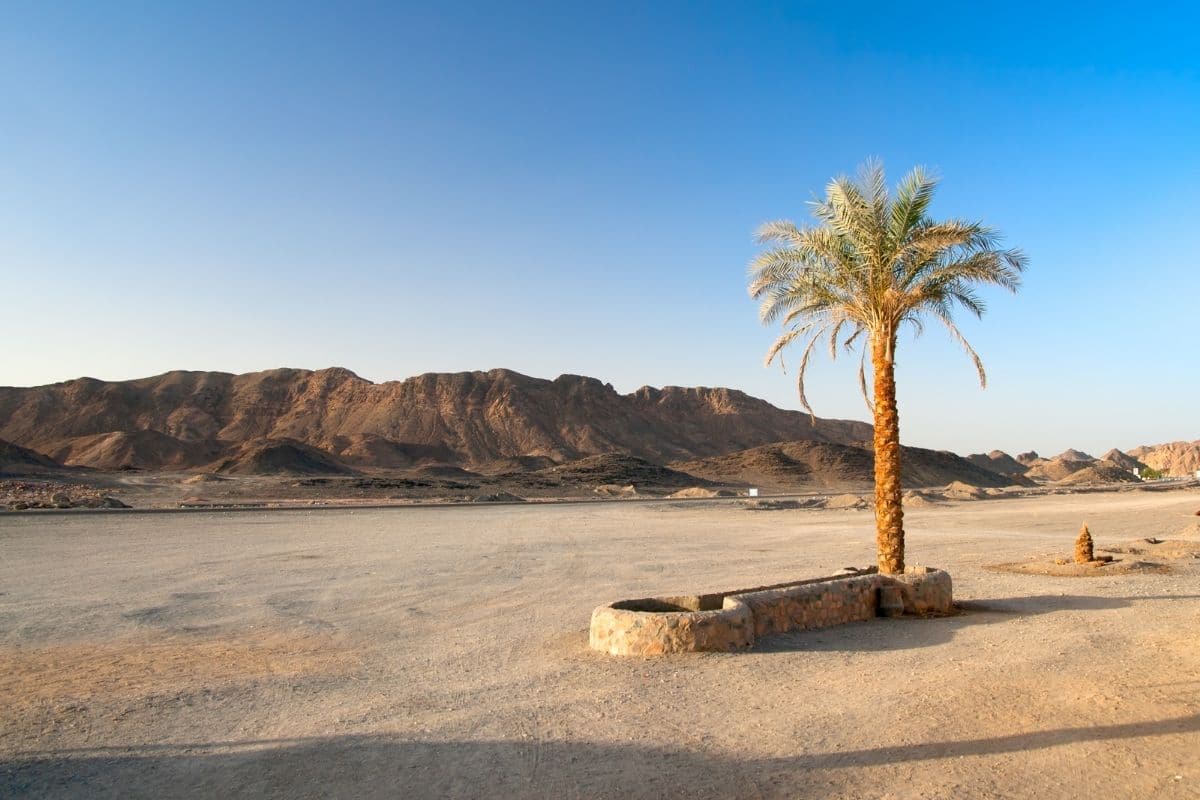
Source: Pinterest
Think of a tropical oasis and these beautiful plants will automatically spring to mind. Many palm trees are heat hardy, and are best suited to the more arid weather conditions of southwestern states and Arizona.
When choosing the right type of palms for a desert climate, it’s essential to consider sun exposure, humidity, and nighttime temperatures so the plant can effectively grow.
9. Desert Sage (Salvia Dorrii)
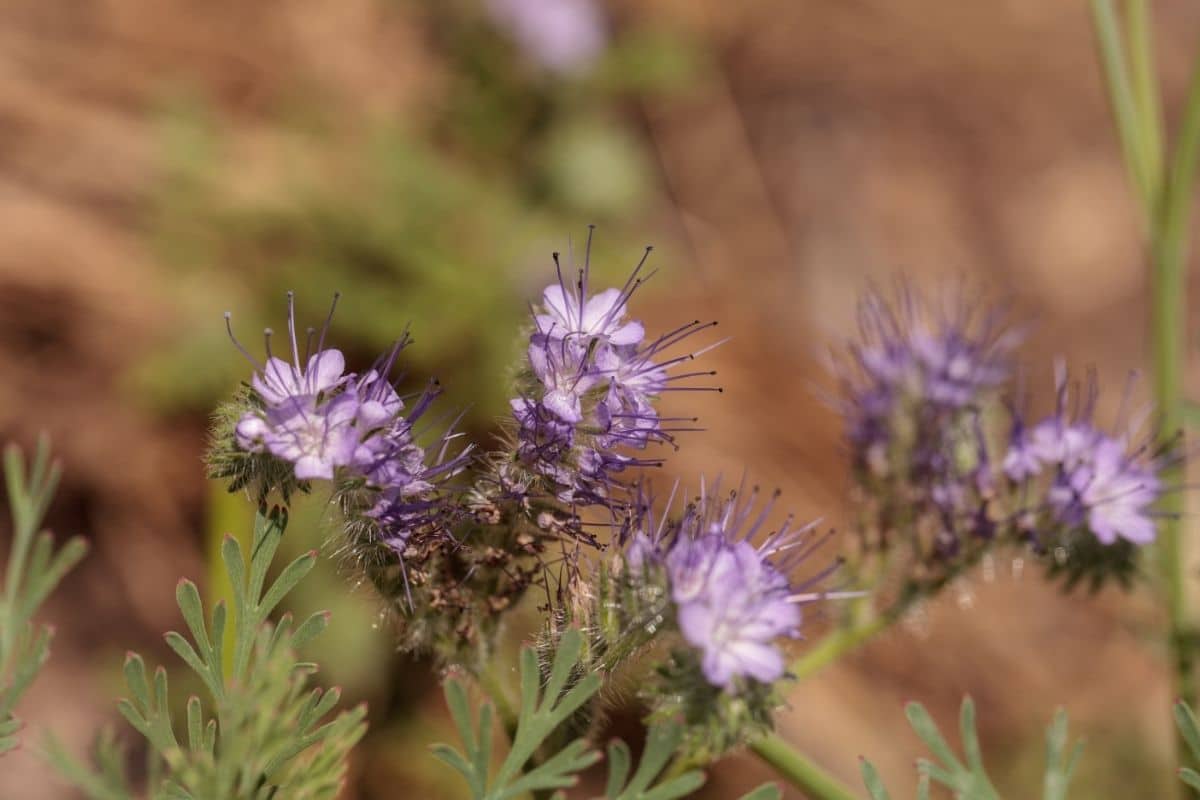
Source: Pinterest
Desert sage is a very colorful wildflower that stands out in any desert environment. It grows in dense branches and also features flowers that are bright blue and purple in color. These are shrouded with subtle gray foliage, with leaves that release an aromatic fragrance.
The plant is drought resistant and thrives in the heat which makes it one of the best and most aesthetically pleasing desert plants out there.
10. Fox Tail Agave (Agave Attenuata)
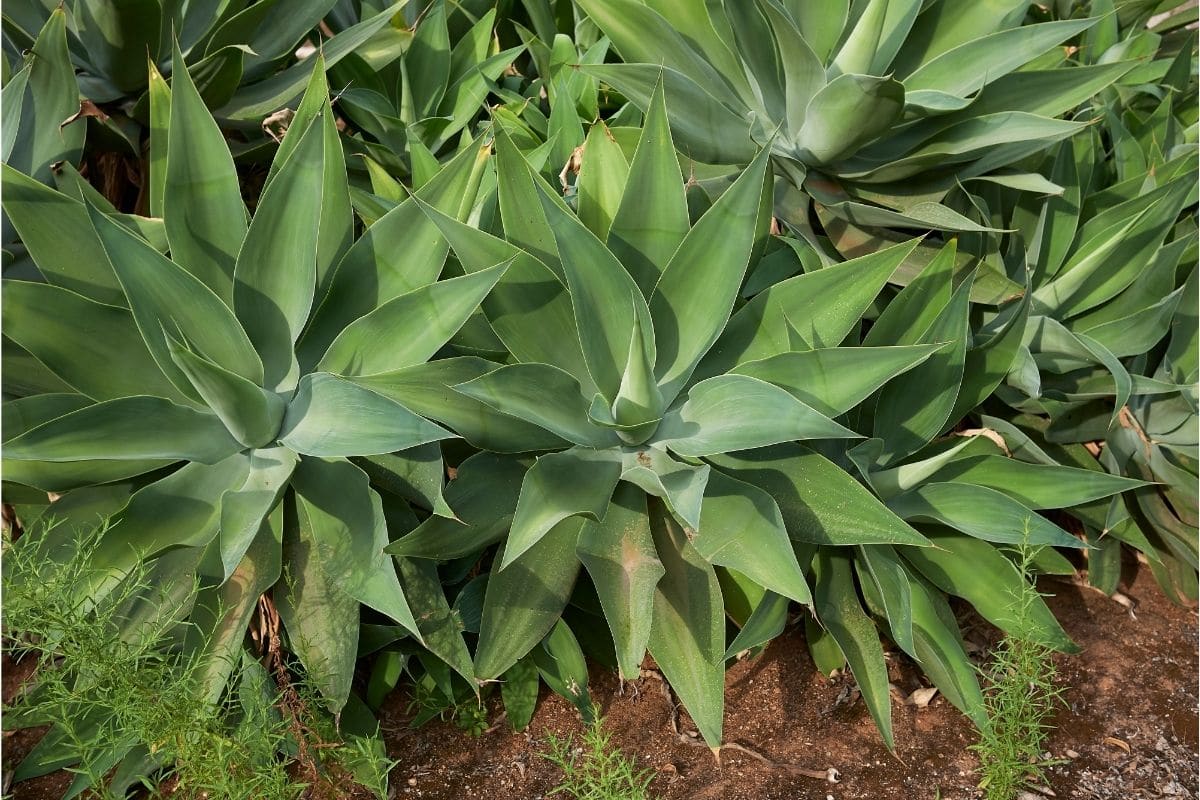
Source: Pinterest
Fox Tail Agave thrives in the hot climate of the desert. It usually features clumps of thick blue-green leaves which gives the plant its trademark spiked appearance. Its succulent leaves have lots of in-built moisture which ensures that they are equipped for life in the desert.
This plant is also a popular choice for ornamental plants in subtropical and arid climates.
11. Ghost Plant (Graptopetalum Paraguayense)
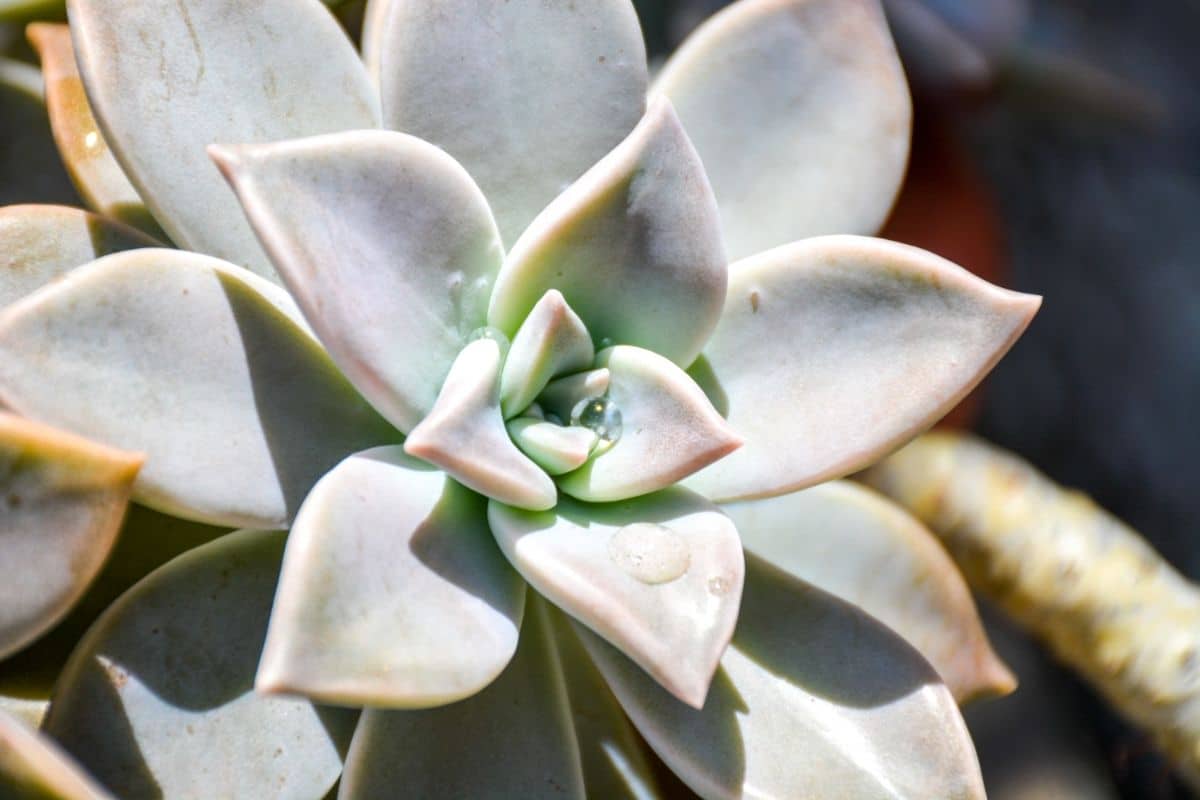
Source: Pinterest
The Ghost Plant (“mother-of-pearl”) is a succulent variation that is native to Mexico. It typically grows best in the humid conditions of an intense desert climate. This plant has a relatively distinctive appearance thanks to its succulent leaves that grow in the shape of a rosette, and its green-yellow color.
And, as long as you abide by its basic growing requirements, the ghost plant also makes for an exceptional small houseplant.
12. Golden Barrel Cactus (Echinocactus Grusonii)
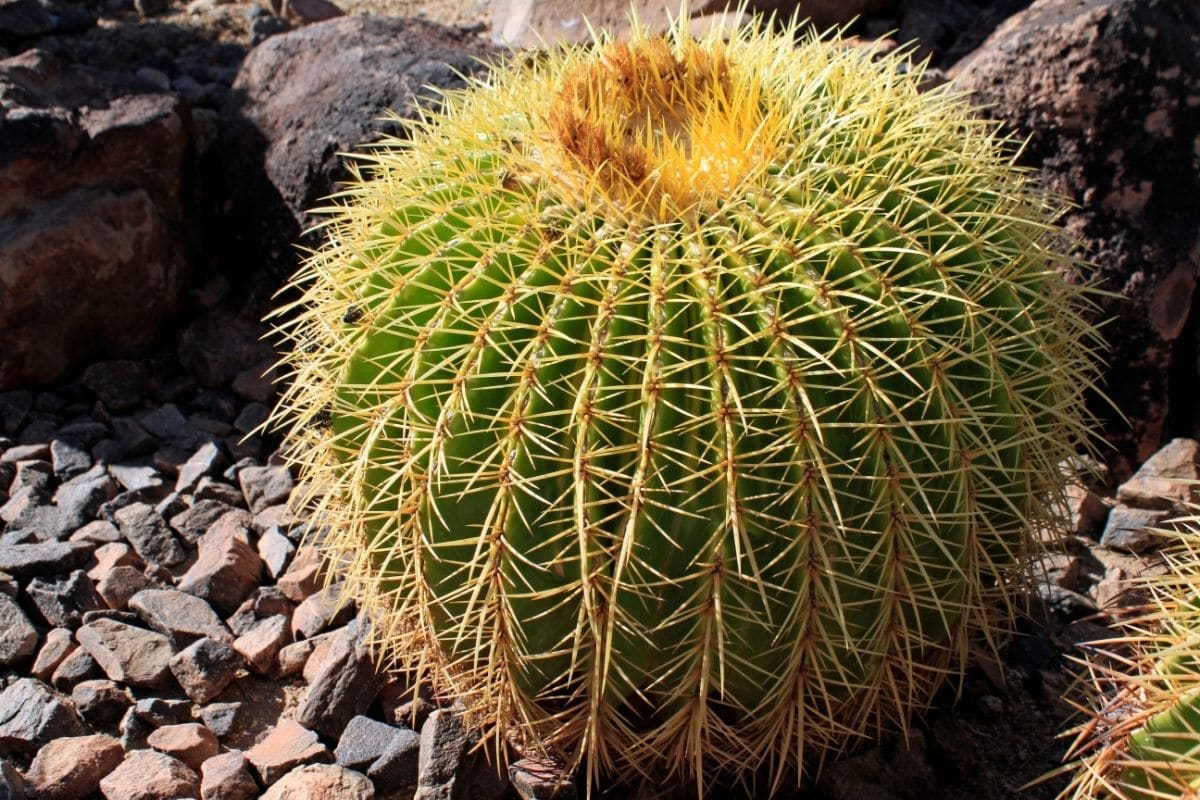
Source: Pinterest
As a desert plant, you can’t get any more heat hardy than this! The Golden Barrel Cactus is cylindrical, decorated by a myriad of yellow or white sharp spines, and also features a crown of small yellow flowers, too.
These cacti are fare rarer in deserts than previous years because of habitat destruction, and they also make excellent additions to any yard. They also have a lifetime of up to 30 years!
13. Jade Plant (Crassula Ovata)

Source: Pinterest
Also referred to as a “money tree” there’s something special about this particular type of short shrub. The Jade plant features oval-shaped green succulent foliage that grows from a multi-branch trunk. Due to its appearance, it is often mistaken to be a mini tree.
Additionally, it is extremely heat tolerant, meaning it thrives in outdoor desert conditions. While these plants can grow in partial shade, they require lots of sunlight to help them thrive.
14. Jumping Cholla (Cylindropuntia Fulgida)
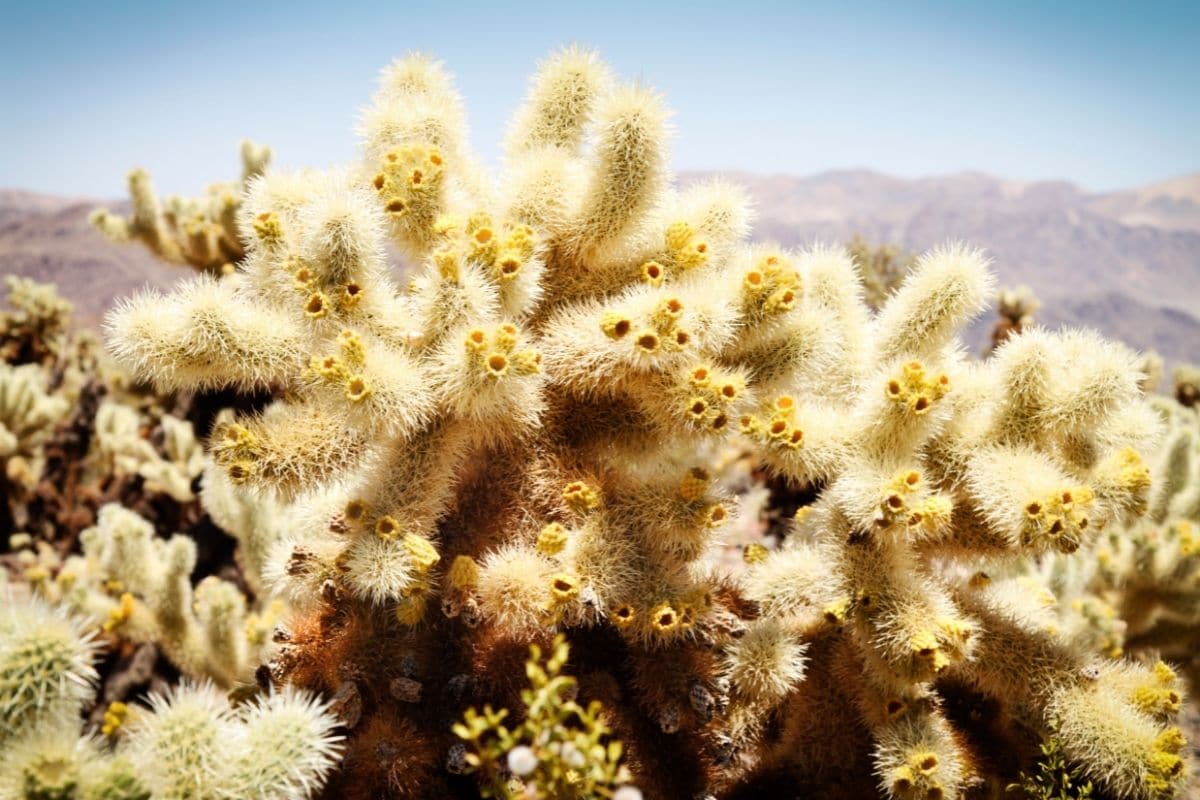
Source: Pinterest
The Jumping Chollas are trees that can be found in parts of Southern California and Arizona’s Sonoran Desert. This plant is characterized by a wide trunk with branches growing from the top, all of which are covered in sharp spines, which gives the plant its tree-like appearance.
Jumping Chollas also produce white and pink flowers that also feature lavender-colored markings. These plants also grow to be quite tall (approximately 13 ft.) in height.
15. Lady Banks Rose (Rosa Banksiae)
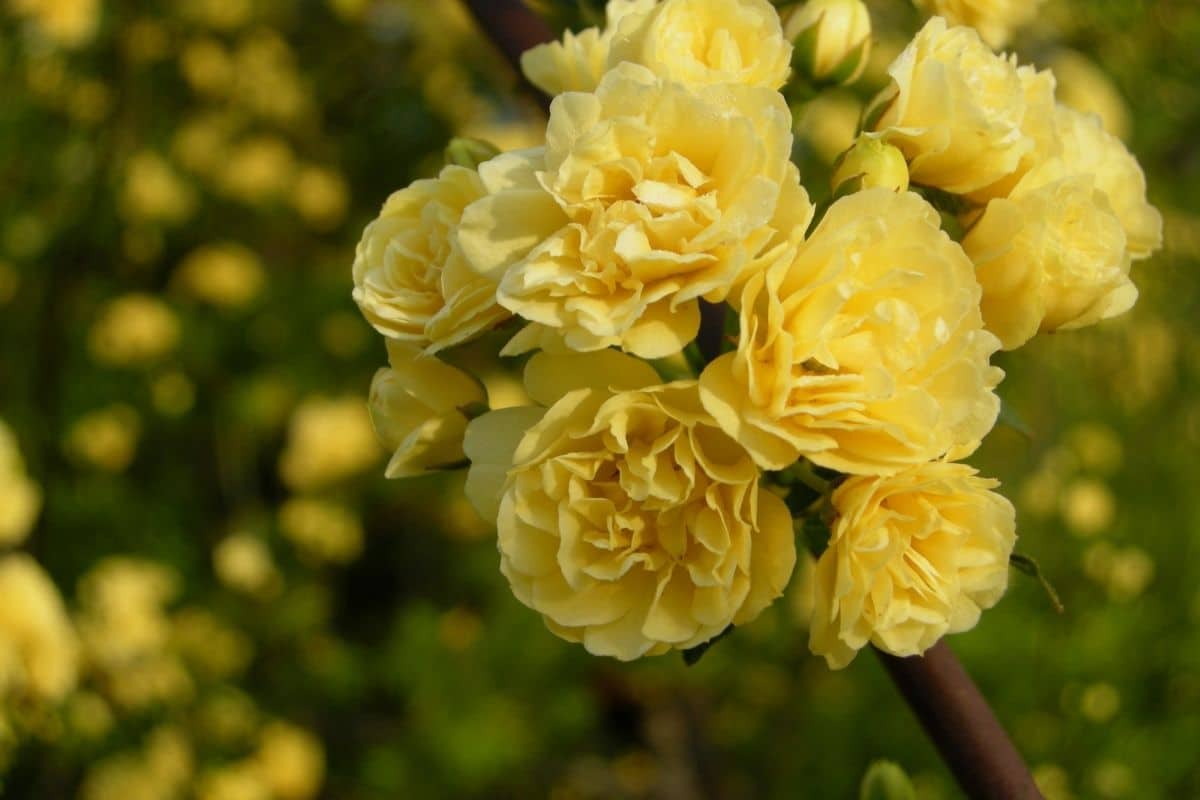
Source: Pinterest
The Lady Banks Rose grows much like a vine. It has unusual dark green leaves that are glossy on both sides. Finally, there are few-to-no thorns on the long, flexible canes, making this a favorite for arranging and pruning. Pale yellow flowers and a distinct lack of floral fragrance makes this form less appealing, yet it’s equally vigorous in the desert.
16. Mexican Feather Grass (Nassella Tenuissima)
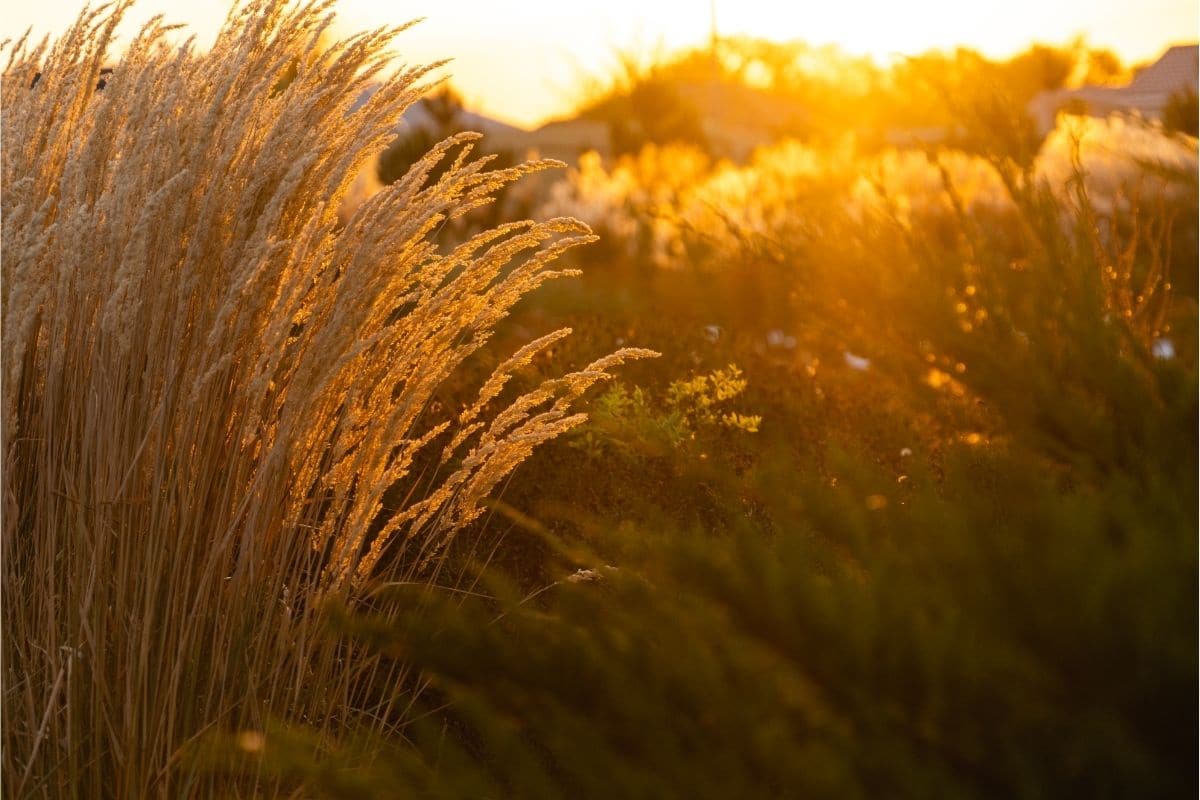
Source: Pinterest
This particular desert plant happens to be native to the hot climates of the Southwest US, Argentina, and Mexico. This particular desert plant thrives under the full sun, requires dry soil to grow properly, and is also highly drought tolerant.
Mexican Feather Grass plants have wispy, fine-textured grass that will enhance any type of desert landscape. It’s especially beautiful when planted into decorative containers or borders.
17. Mojave Aster (Xylorhiza Tortifolia)
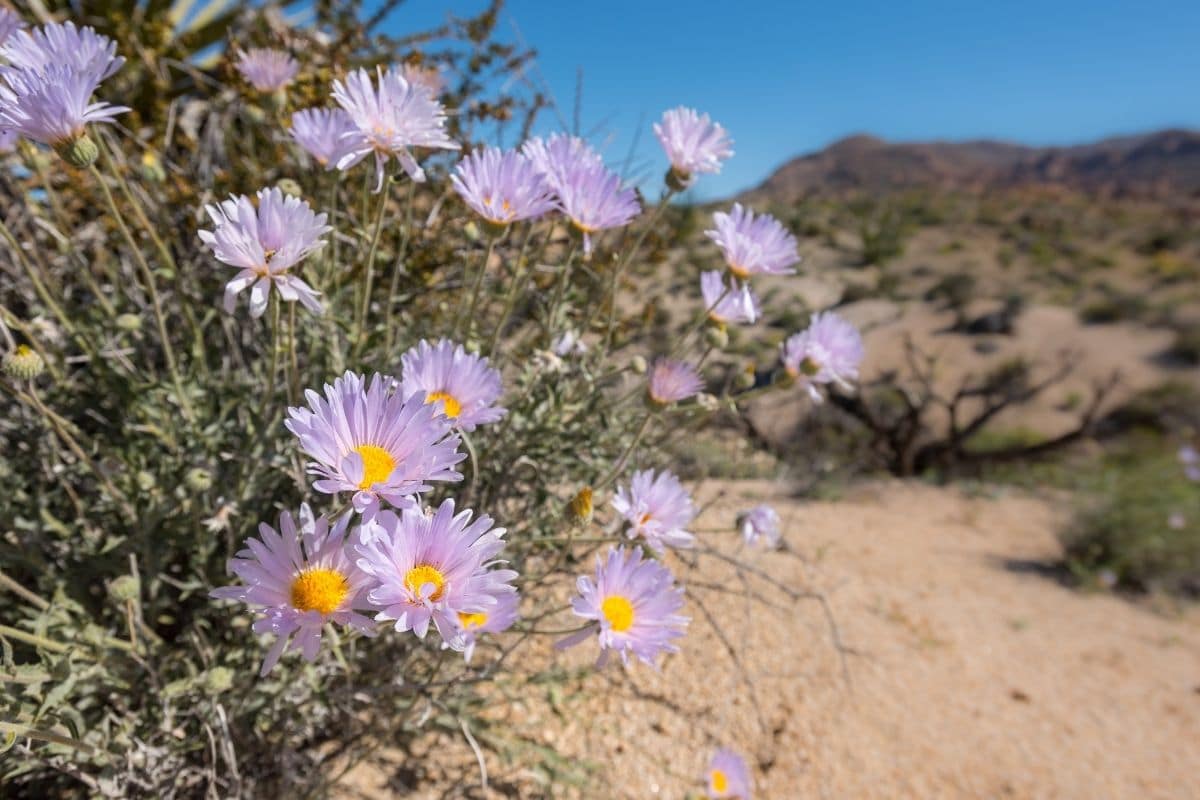
Source: Pinterest
Mojave is of the most stunning flowering desert plants. Native to the Mojave Desert, this plant is heat and drought tolerant and extremely hardy.
The petals of the Mojave Aster plant are lavender and white, and look like they are being emitted from a delightfully vibrant yellow center. You can find these flowers in the Sonoran Desert and Great Basin Desert.
18. Ocotillo (Fouquieria Splendens)
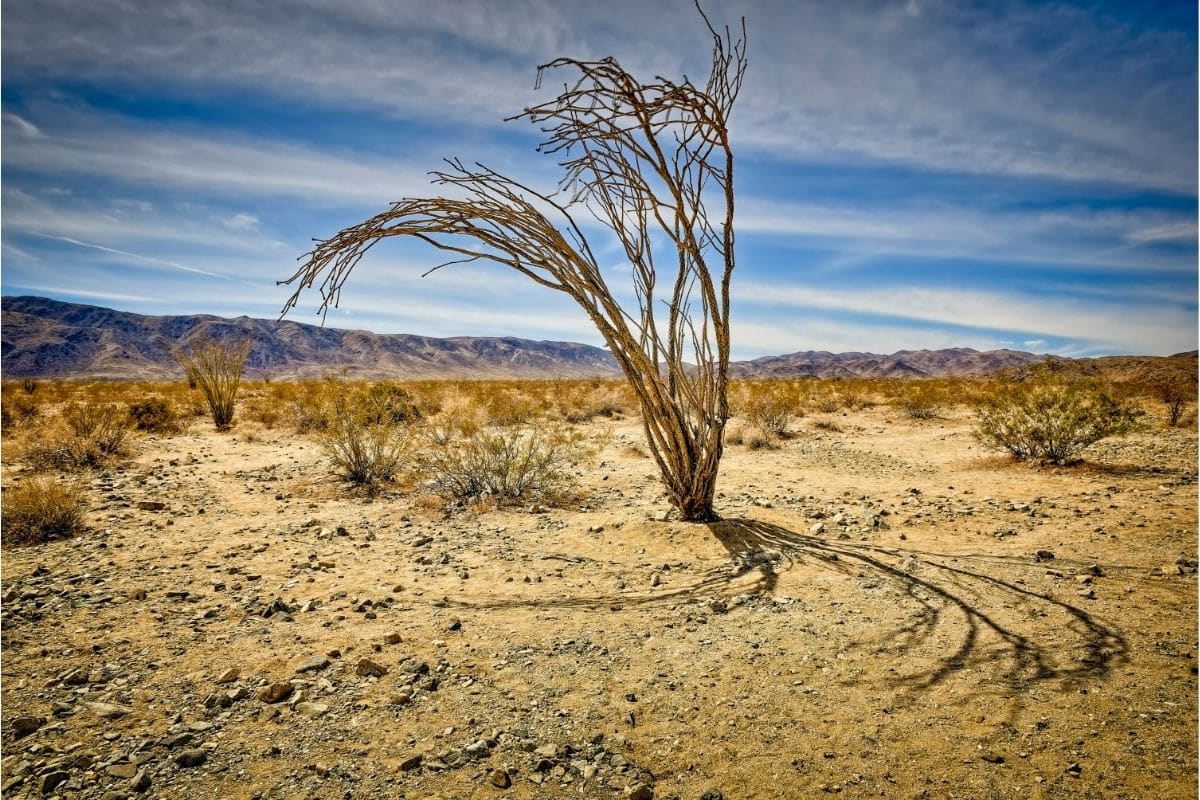
Source: Pinterest
The Ocotillo is a common desert shrub that bears striking red tubular-shaped flowers from its spiny, leaf-covered stem. Its sharply-toothed stem makes this shrub a popular choice as fencing in the garden. This shrub is native to the Sonoran Desert where it prefers rocky terrain. Its bloom time occurs from March to June.
Also known as Candlewood, the Ocotillo can live a long life of 60 years, with studies suggesting that some can live well over 100 years.
19. Palo Verde (Parkinsonia)
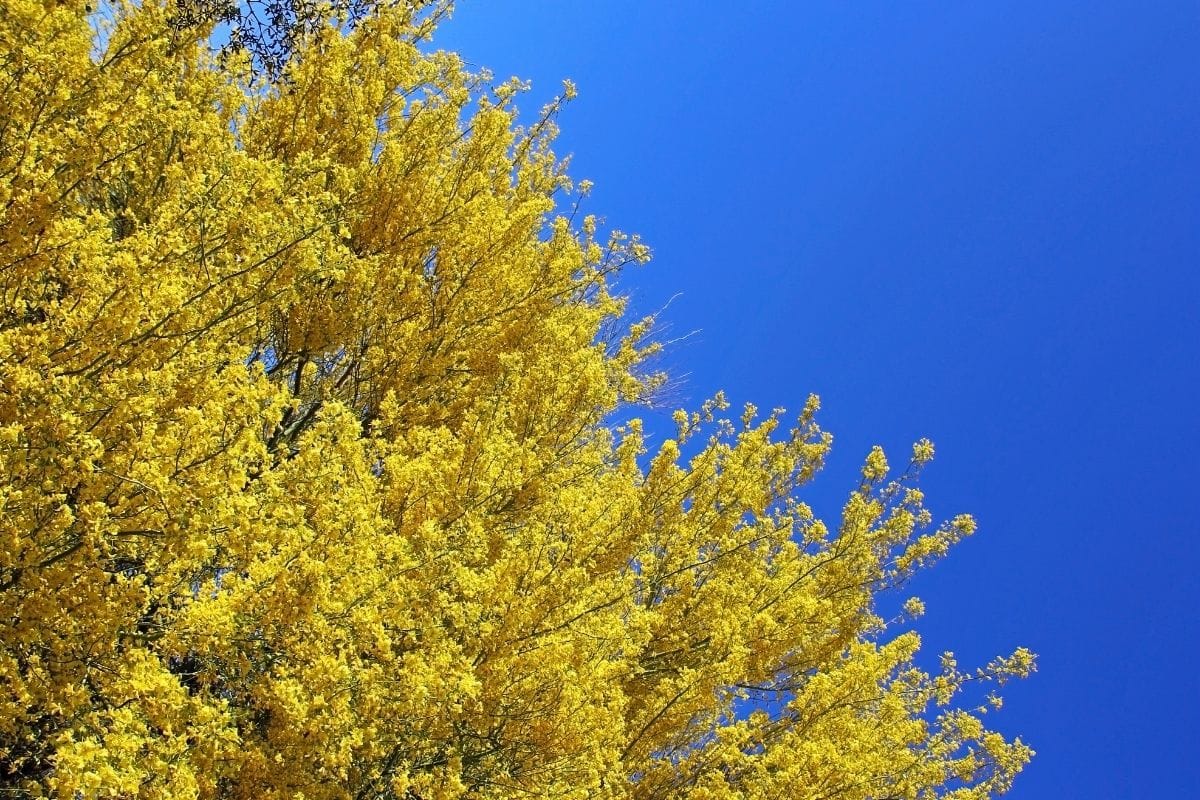
Source: Pinterest
This popular desert tree is known for its striking green trunk (caused by the presence of chlorophyll) and bright yellow flowers. In the wild desert, this tree plays a key role in the procreation of new plant life as it provides necessary shade and protection where vulnerable desert plants can grow.
The Palo Verde plant also makes for a striking addition to any backyard!
20. Pencil Plant (Euphorbia Tirucalli)
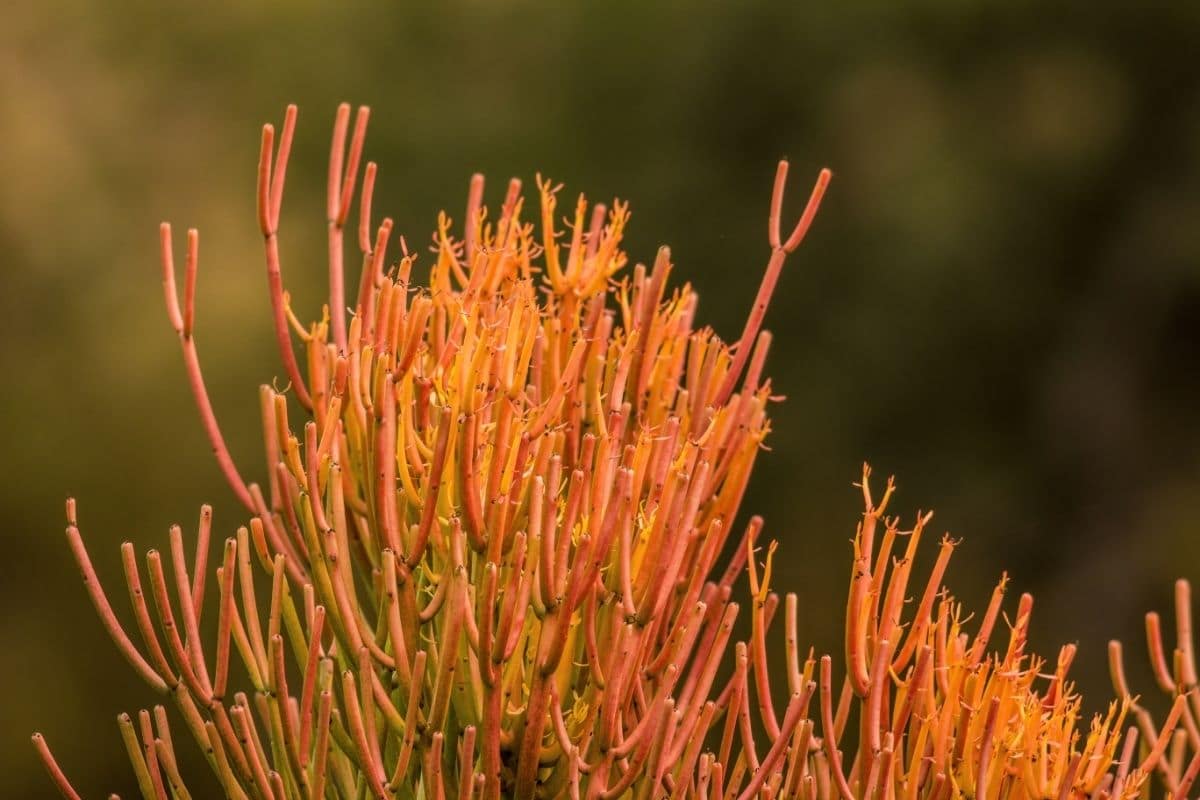
Source: Pinterest
A popular choice amongst modern landscapers, these succulents are widely used in drought-tolerant landscaping. The plant’s green pencil-like sticks turn bright coral when the plant is under stress which can stem from having too little water, being too cold, or being planted in nutrient-poor soil.
Gardeners commonly deprive this succulent, as well as several other types of succulents, of nutrients or water on purpose in order to encourage the plant to display its bright and showy colors.
21. Red Pancake (Kalanchoe Thyrsiflora)
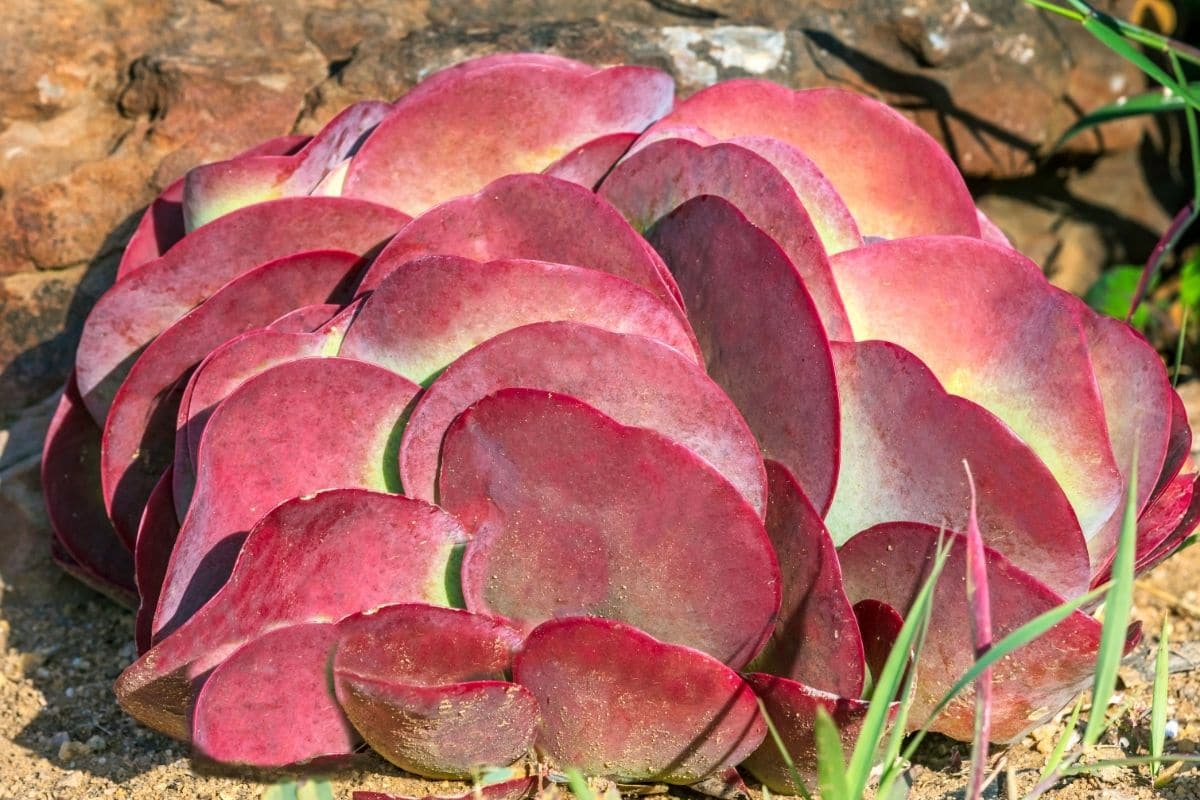
Source: Pinterest
The common names for this small desert-dwelling plant mostly describe the leaves of this succulent—red pancake, paddle plant, desert cabbage, and flapjacks. The large, round, fleshy leaves are a blue-green color with hints of red blushing on the edges.
The desert succulent produces waxy yellow flowers. The hot sun helps the leaves keep their color, and the fleshy leaves hold moisture.
22. Sand Verbena (Abronia)
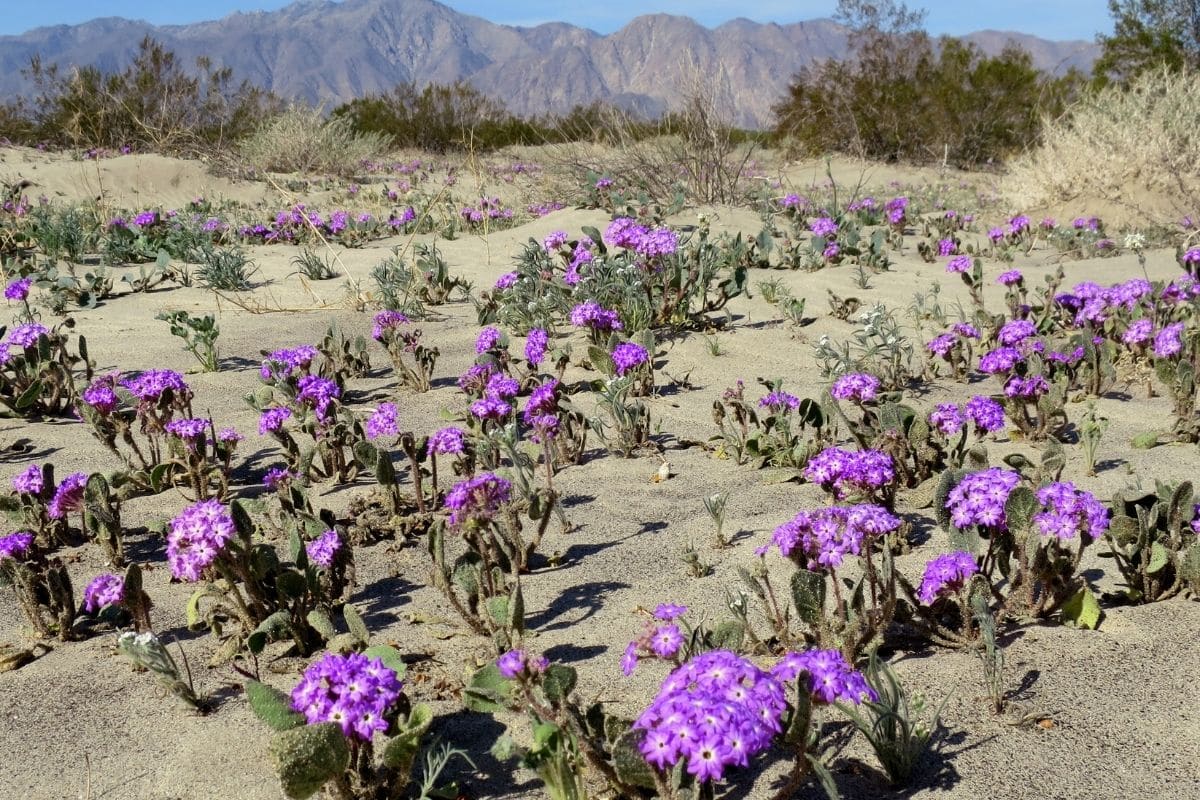
Source: Pinterest
As the name implies, this desert plant loves to grow in sandy areas with elevations lower than 1500 feet. If your land is sandy with a lot of dunes, then this plant will fit nicely.
It has creeping vines with trumpet-shaped fragrant lavender-pink flowers. Short, sticky hairs cover both the inch-long, oval, fleshy leaves and the many-branched stems.
23. Texas Sage (Leucophyllum Frutescens)
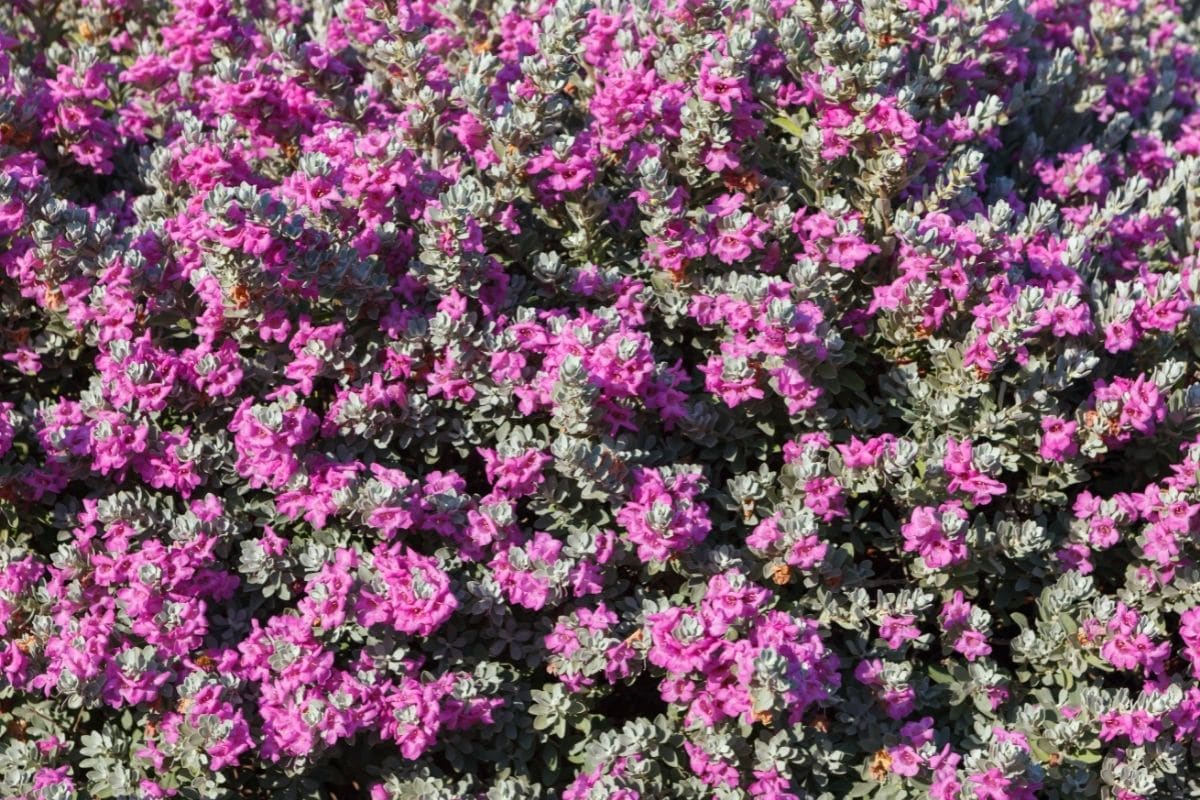
Source: Pinterest
Texas sage is one of the more compact shrubs that can be found in a desert landscape. As a result, it has a large presence in Southern Arizona.
Texas Sage is tough, very drought tolerant, requires little to no maintenance, and thrives under the full sun. The adaptable Texas Sage plant also produces colorful lavender flowers that stand out in all landscapes.
24. Tumbleweed (Salsola Tragus)
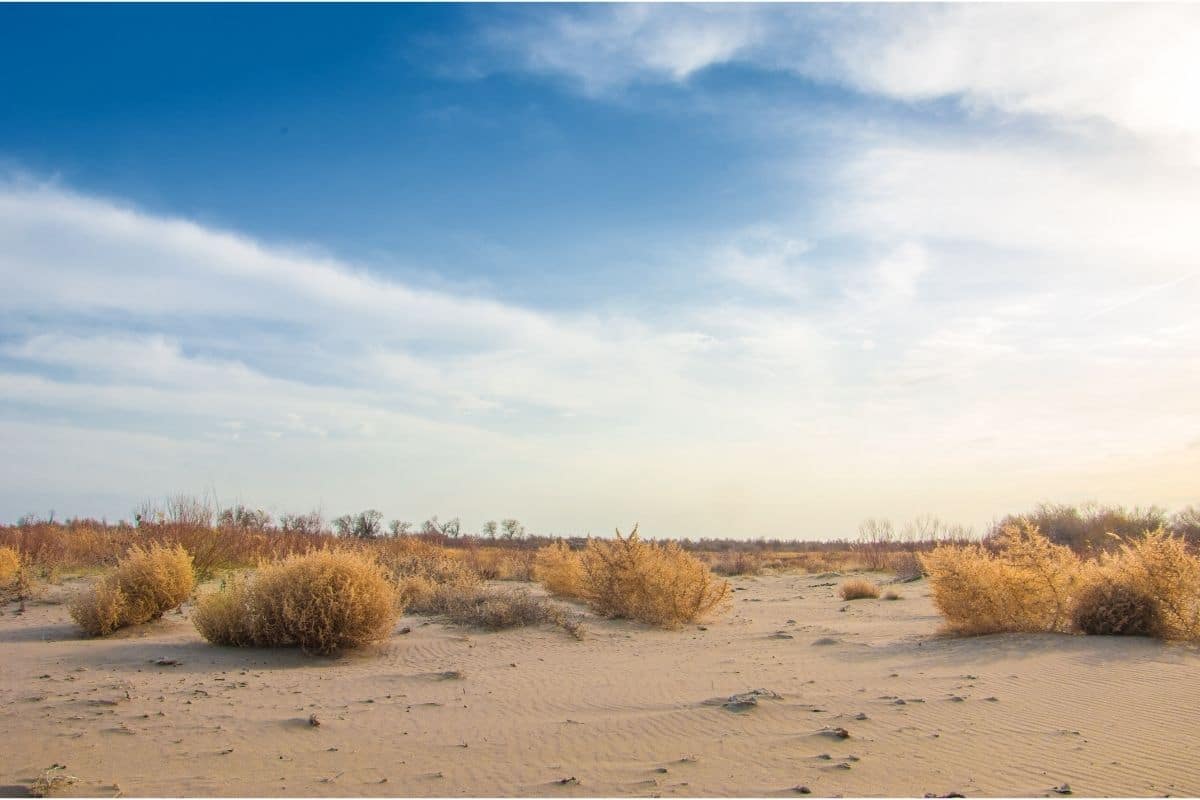
Source: Pinterest
Tumbleweed (or Russian Thistle) is most commonly associated with classic Wild West movies, but there’s a whole lot more to these plants! The ball consists of light dry weed and is the result of the plant detaching entirely from its roots. As the plant is blown through the desert landscape, it spreads seeds that help the invasive plant to reproduce.
25. Yellow Bells (Tecoma Stans)
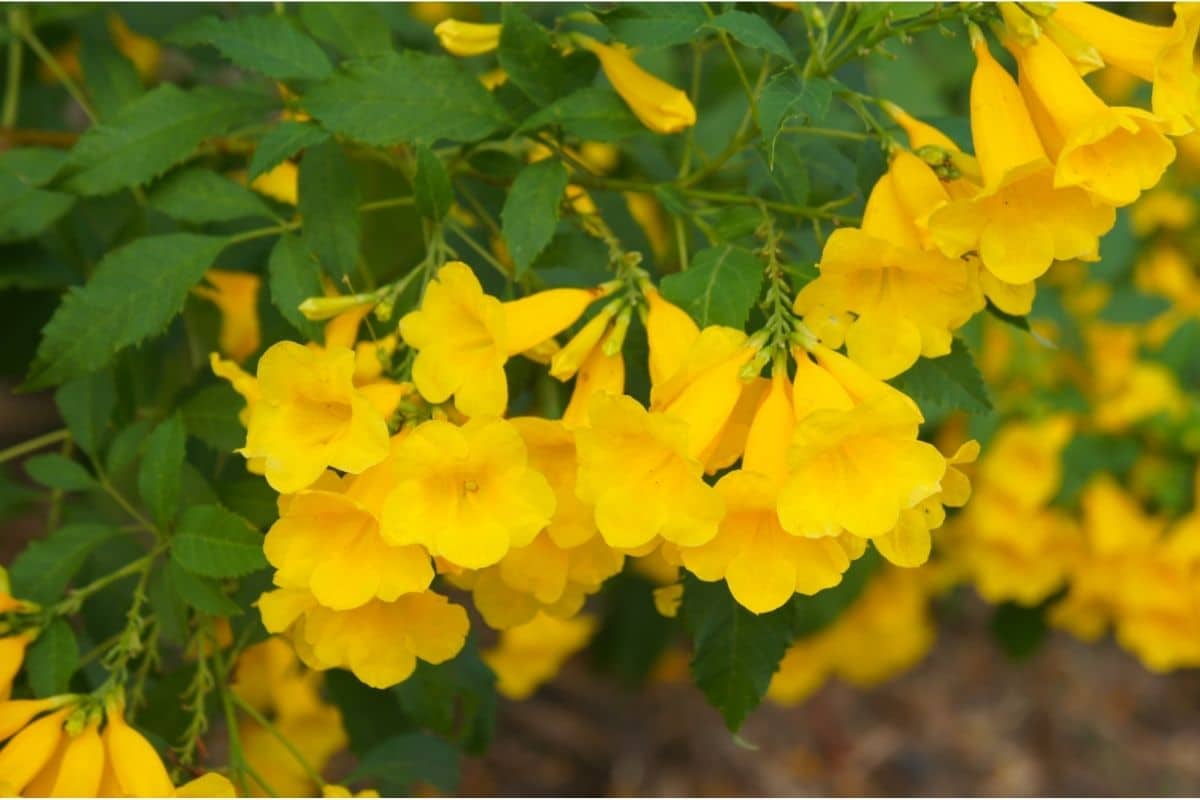
Source: Pinterest
Yellow Bells is a flowering desert shrub that is both heat and drought tolerant. As its name suggests, the yellow bells plant tends to produce brightly-colored golden-yellow flowers that are shaped almost like a funnel.
The emerald green foliage turns into a mass of yellow color. This is an excellent shrub for desert landscaping if you need a full-sun flowering ornamental plant.
Final Thoughts
In this article we have combed through some of the most common (and best) desert plants that thrive in arid, humid conditions, and have narrowed down our top 25 picks for you to explore.
Desert plants are known for their strength, hardiness, resistance to drought, and even their ability to add a pop of color to an otherwise bleak landscape – although these factors do vary quite a lot between plant types.
Desert landscaping is not just limited to cacti and succulent plants. In fact, there are so many kinds of plants that thrive in the harsh conditions of the desert that it can be pretty overwhelming to think about.
So whether you’re looking to add some color to your yard or just wanted to learn a little bit more about desert plants, we hope this article has helped you.
